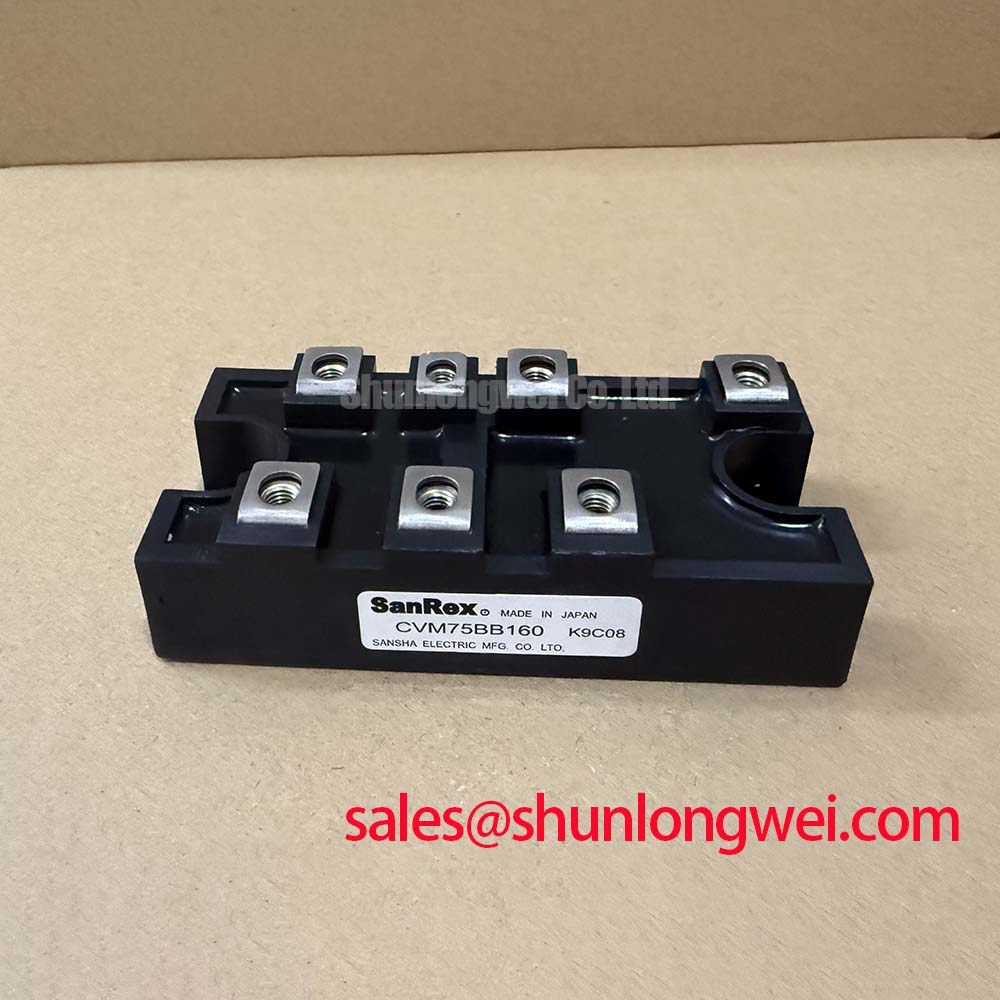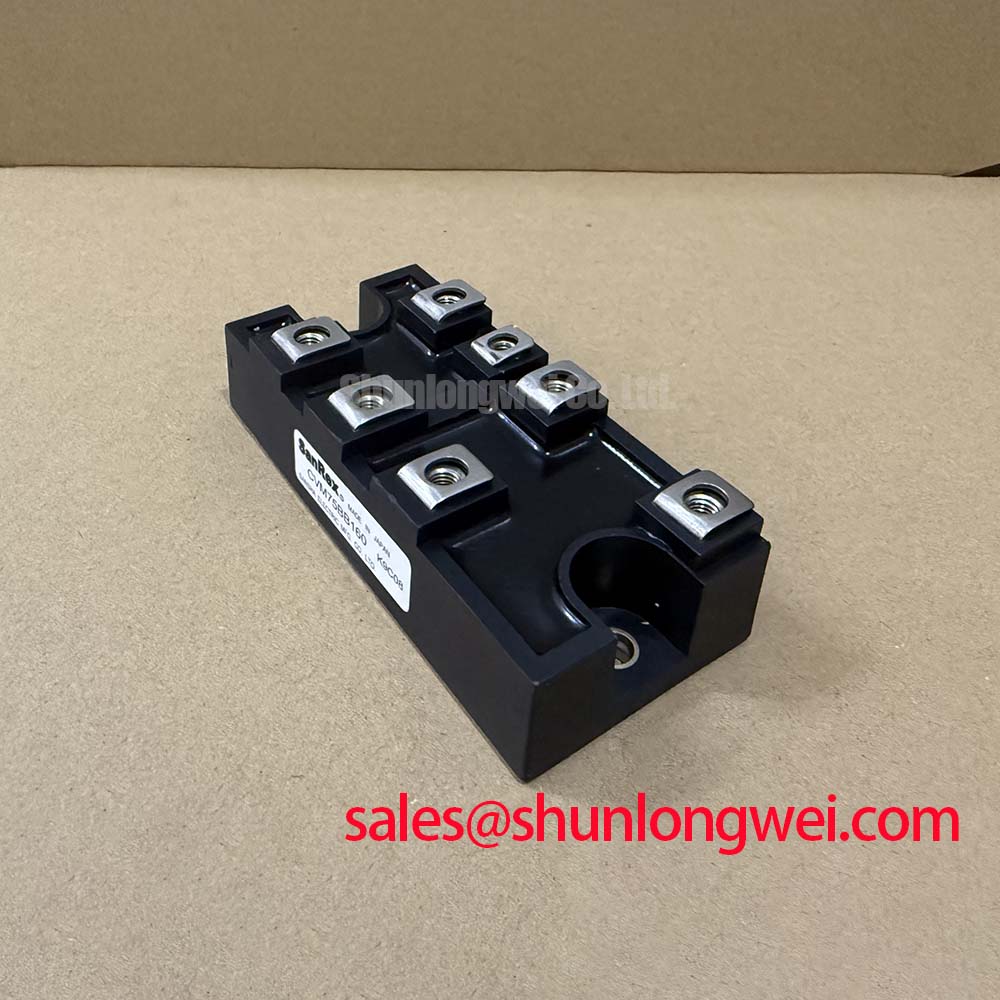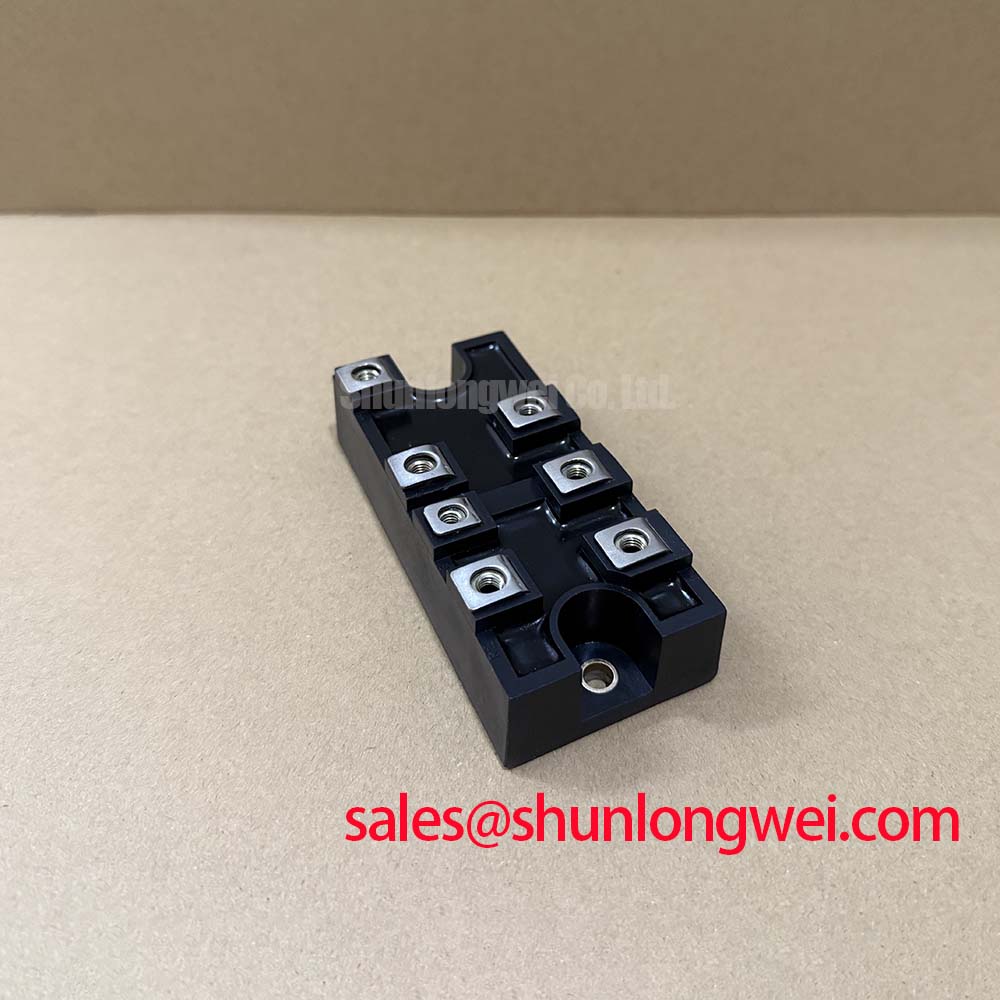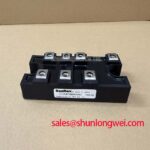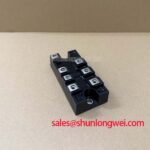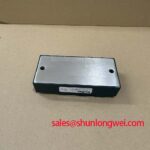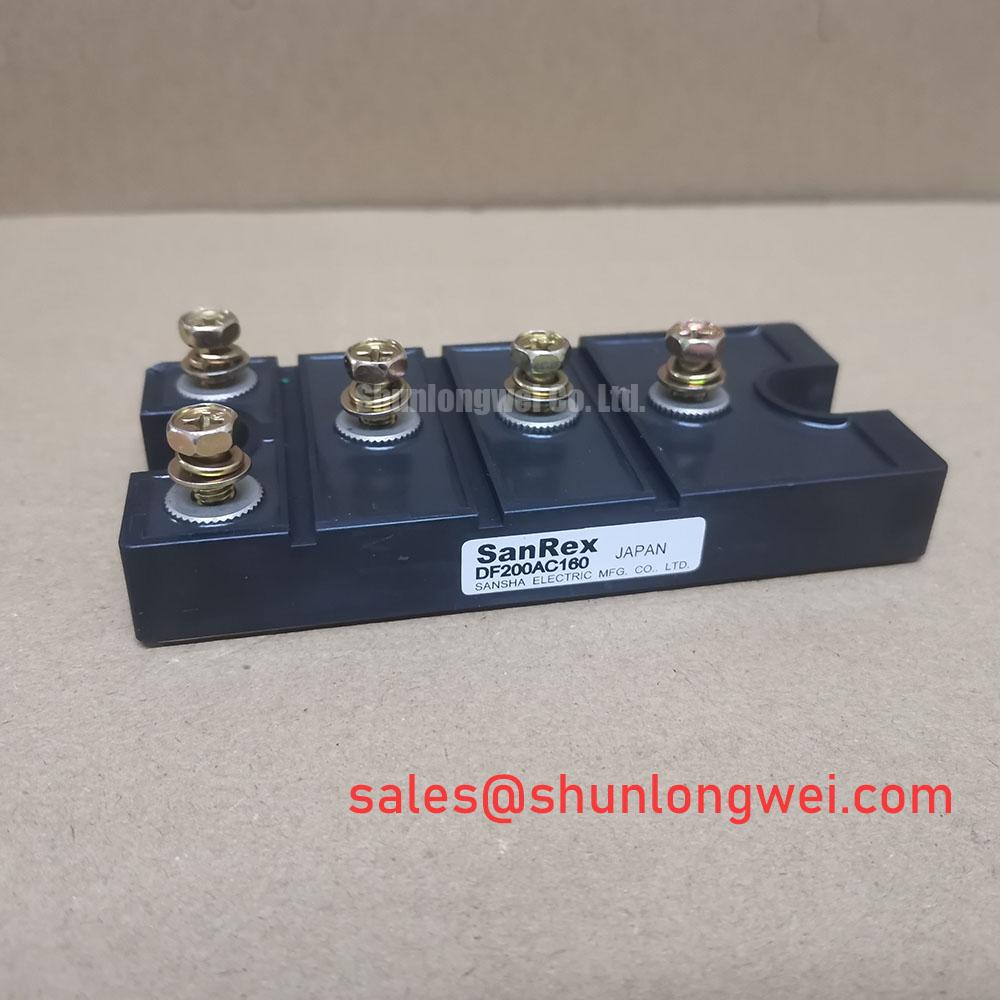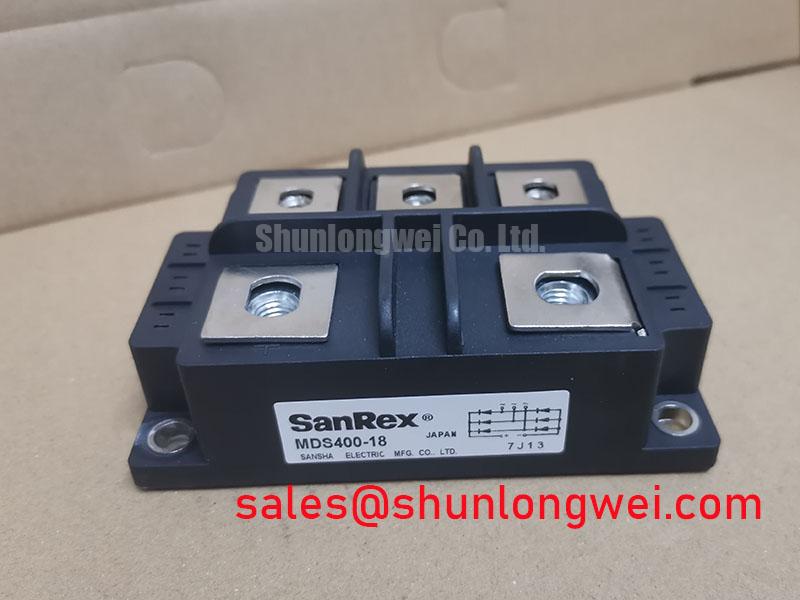CVM75BB160: Sanrex 1600V Three-Phase Diode Bridge Analysis
Resilience by Design: The Sanrex CVM75BB160 Rectifier Module
The Sanrex CVM75BB160 is a Thyristor/Diode Module engineered for exceptional mechanical and operational resilience in demanding power conversion systems. At its core, this module provides a robust solution for three-phase full-wave rectification, integrating a soft-start thyristor to manage inrush currents effectively. What is the key architectural feature that underpins its long-term reliability? The design thoughtfully incorporates glass-passivated chips and an isolated mounting base, directly addressing common failure points in industrial power stages. This construction ensures stable performance even under significant thermal and electrical stress.
Field-Proven Robustness: Deployment Insights
The architectural choices within the Sanrex CVM75BB120 translate directly to field performance, particularly in applications where maintenance is difficult and uptime is paramount. The use of glass-passivated diode chips is a critical factor, creating a hermetic seal against environmental contaminants and preventing junction degradation over time. This intrinsic protection contributes to a stable reverse voltage capability throughout the module's operational life. For large-scale VFDs in manufacturing or HVAC systems, this means fewer instances of rectifier failure, reduced maintenance cycles, and a lower total cost of ownership. This module is a prime candidate for power systems where long-term, uninterrupted service is the primary engineering goal.
Strategic Advantage in High-Uptime Industries
In sectors like renewable energy generation, commercial welding, and uninterruptible power supplies (UPS), component failure carries significant financial and operational consequences. The CVM75BB160 provides a strategic advantage by focusing on intrinsic durability. The integrated thyristor for soft-start functionality is a key example. By replacing a mechanical relay, it eliminates a common point of failure—contact wear and tear—and boosts the reliability of the entire inrush current limiting circuit. This solid-state approach is emblematic of a design philosophy geared towards maximizing mean time between failures (MTBF), making the CVM75BB160 a sound investment for infrastructure designed to operate for decades. For engineers developing next-generation high-efficiency power systems, specifying components with such built-in resilience is a critical step towards achieving project goals.
An Engineering-Focused Comparison for Your Design
When evaluating rectifier modules, engineers must weigh multiple factors beyond primary voltage and current ratings. The table below presents data points for the CVM75BB160 to facilitate an informed technical assessment for your specific application.
| Parameter | Sanrex CVM75BB160 | Note for Design Engineers |
|---|---|---|
| Repetitive Peak Reverse Voltage (VRRM) | 1600 V | Provides substantial safety margin for 400/480VAC line applications. |
| DC Output Current (ID) | 75 A @ Tc=98°C | The high case temperature rating indicates efficient internal heat transfer. |
| Surge Forward Current (IFSM) | 1000 A | Highlights the module's ability to withstand significant, non-repetitive fault currents. |
| Isolation Voltage (Viso) | 2500 V | Simplifies heatsink mounting and enhances overall system safety. |
Inside the Architecture: The Foundation of Durability
The CVM75BB160's resilience is not accidental; it is a direct result of specific internal design choices. The module's construction is centered around an electrically isolated baseplate. This feature is crucial as it allows multiple modules to be mounted onto a single, common heatsink without the need for additional, often fragile, insulating pads. This simplifies the mechanical assembly and, more importantly, improves the thermal interface between the semiconductor and the cooling system. An efficient thermal path is paramount for long-term reliability. Think of thermal resistance like the diameter of a pipe; a lower resistance is like a wider pipe, allowing heat to flow away from the sensitive diode junctions more easily, thus keeping operating temperatures lower and extending the component's life.
Application Arenas Demanding Mechanical Integrity
The robust design of the Sanrex CVM75BB160 makes it highly suitable for applications where the power electronics are subjected to harsh operating conditions. Its architecture is engineered to provide dependable performance in environments with high levels of vibration, frequent thermal cycling, and the potential for electrical overstress.
- Welding and Plasma Cutting Machines: These systems generate significant electrical noise and thermal shock. The module's high surge current capability (1000 A) is essential for handling the intermittent, high-power demands of the welding arc.
- Industrial Motor Drives: In heavy machinery, such as cranes, presses, and conveyor systems, the Variable Frequency Drive (VFD) is often exposed to constant vibration and fluctuating loads. The CVM75BB160's solid construction ensures the integrity of its internal connections.
- Uninterruptible Power Supplies (UPS): For critical infrastructure in data centers or hospitals, the reliability of the UPS is non-negotiable. The module’s integrated soft-start thyristor enhances the reliability of the battery charging circuit by eliminating mechanical relay failure.
- Switch Mode Power Supplies (SMPS): In high-power industrial SMPS, the rectifier front-end must be both efficient and durable. The low forward voltage drop of the diodes minimizes power loss, while the isolated base simplifies thermal management in compact enclosures.
For industrial motor drives requiring robust front-end rectification, the CVM75BB160's 1600V rating and integrated thyristor provide a reliable foundation over standard solutions.
CVM75BB160 Core Performance Metrics
This section provides a focused summary of the key electrical and thermal specifications that define the CVM75BB160's performance envelope. These parameters are essential for accurate system modeling and thermal design.
| Parameter | Value |
|---|---|
| Repetitive Peak Reverse Voltage (VRRM) - Diode & Thyristor | 1600 V |
| DC Output Current (ID) at Tc=98°C | 75 A |
| Forward Voltage Drop (VFM) at 75A | 1.50 V (Max) |
| Thermal Resistance, Junction to Case (Rth(j-c)) | 0.23 °C/W |
| Isolation Voltage (AC, 1 minute) | 2500 V |
| Operating Junction Temperature (Tj) | -30 to +150 °C |
Download the CVM75BB160 Datasheet for complete specifications and performance curves.
Frequently Asked Questions
What is the primary advantage of the integrated thyristor in the CVM75BB160?
The built-in thyristor provides a solid-state solution for soft-starting, which manages the inrush current to downstream capacitors during power-up. This eliminates the need for an external mechanical relay and its associated failure modes (contact pitting, coil failure), significantly enhancing the overall system reliability and operational lifespan.
How does the 1600V rating benefit a system design for a 480VAC line?
A standard 480VAC three-phase line can have a peak voltage of approximately 679V (480V * √2). Industry standards often recommend a safety margin of at least two times the peak voltage for reliable operation, accounting for line transients and spikes. A 1600V rating provides a comfortable margin (1600V / 679V ≈ 2.35x), ensuring the rectifier can withstand voltage surges common in industrial environments, thereby preventing catastrophic failure.
Can the isolated mounting base of this module help reduce system assembly costs?
Yes. The 2500V isolation rating of the baseplate allows the module to be mounted directly to a grounded chassis or a common heatsink shared with other isolated modules. This eliminates the need for separate, thermally-conductive-but-electrically-insulating pads (e.g., silicone or mica), reducing component count, simplifying the assembly process, and improving the consistency of the thermal interface.
As industrial automation and power infrastructure evolve, the demand for components that offer not just performance but predictable, long-term reliability will intensify. The Sanrex CVM75BB160, with its emphasis on robust mechanical design and the elimination of common failure points, is strategically positioned to meet this need. It represents a forward-looking approach to power rectification, where the component's lifecycle value and contribution to system uptime are considered as critical as its initial electrical specifications. Integrating such resilient components is a key step in building the durable and efficient power systems of the future.

